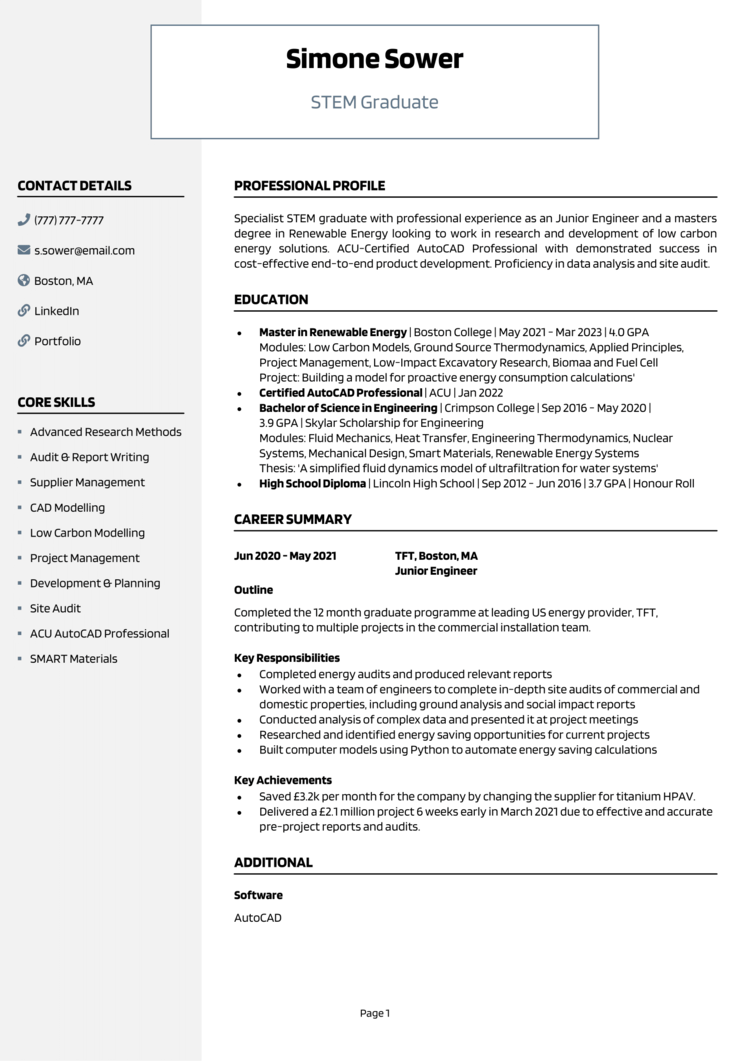
If so, then you need a strong resume that highlights your relevant skills and experience in science, technology, engineering, and mathematics, depending on what you specialize in.
To help you craft a professional resume that showcases your specific technical skills, check out our comprehensive writing guide and STEM resume example below.

This example STEM (Science, Technology, Engineering, Mathematics) resume is well-structured to provide a pleasant reading experience for recruiters, and contains all of the crucial information they want to see.
The rest of the guide will show you exactly how you can achieve this in your own resume.

If you want to get noticed in the job market, you have to pay attention to the format and layout of your resume.
Essentially your resume needs to look highly polished, and provide hiring managers with an easy reading experience.
Use these resume formatting tips to get a head start on this.
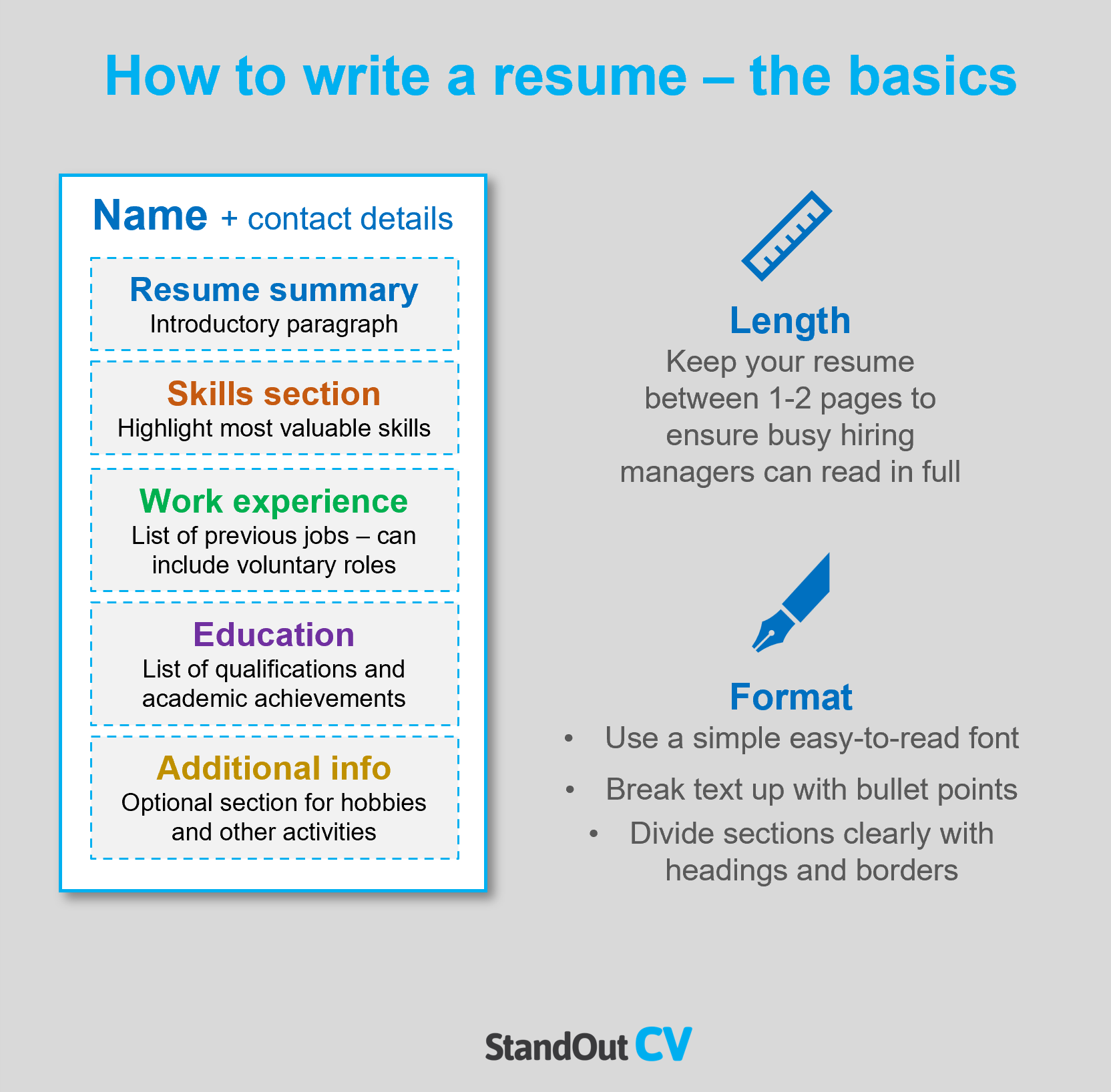
Quick tip: Achieving a professional look for your resume can be difficult and time-consuming. If you want to create an attractive resume quickly, try our quick-and-easy Resume Builder and use one of their eye-catching resume templates.
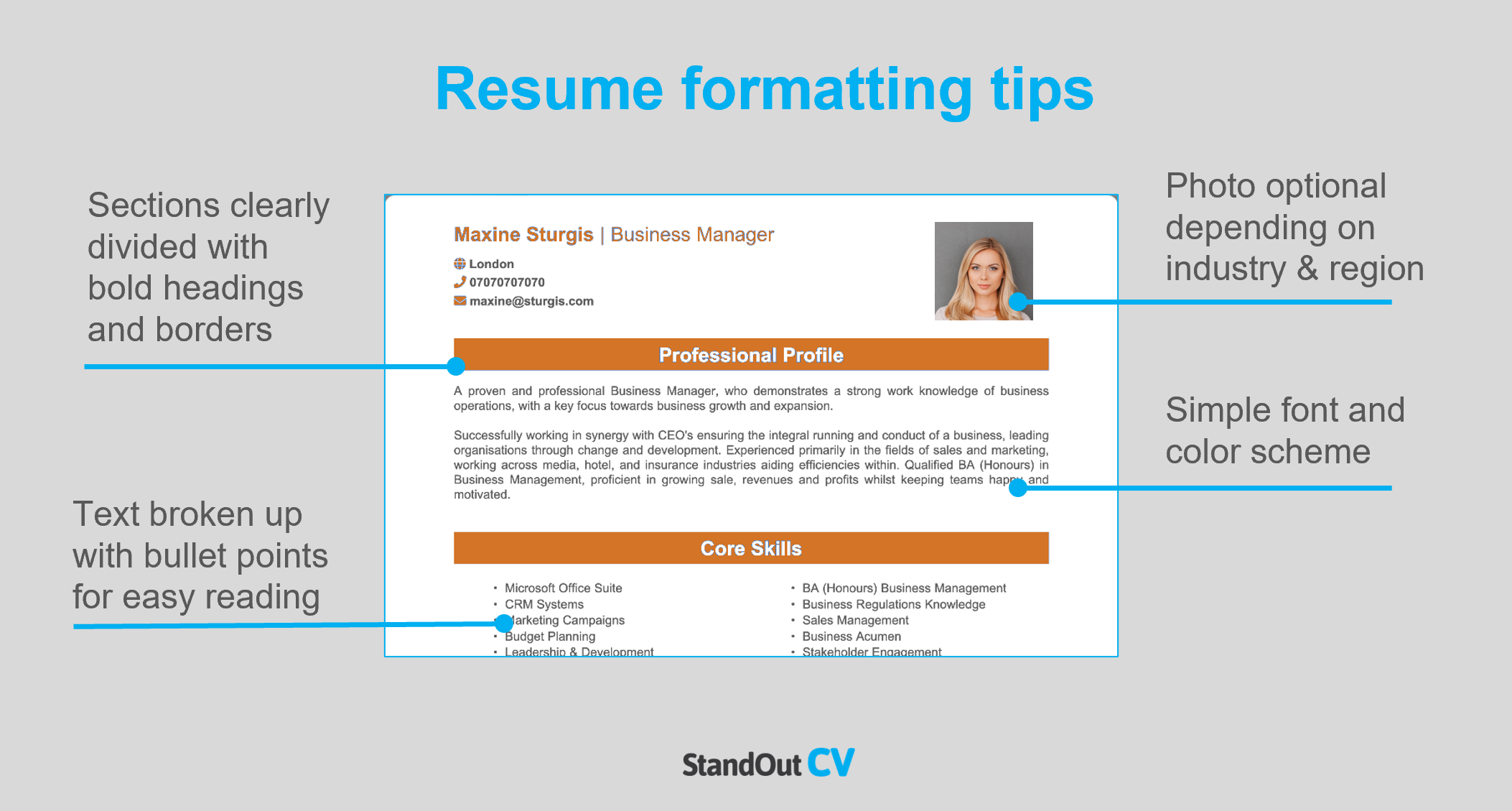
When writing your resume, you should always include the following sections:
Here’s what to include in each part of your resume.
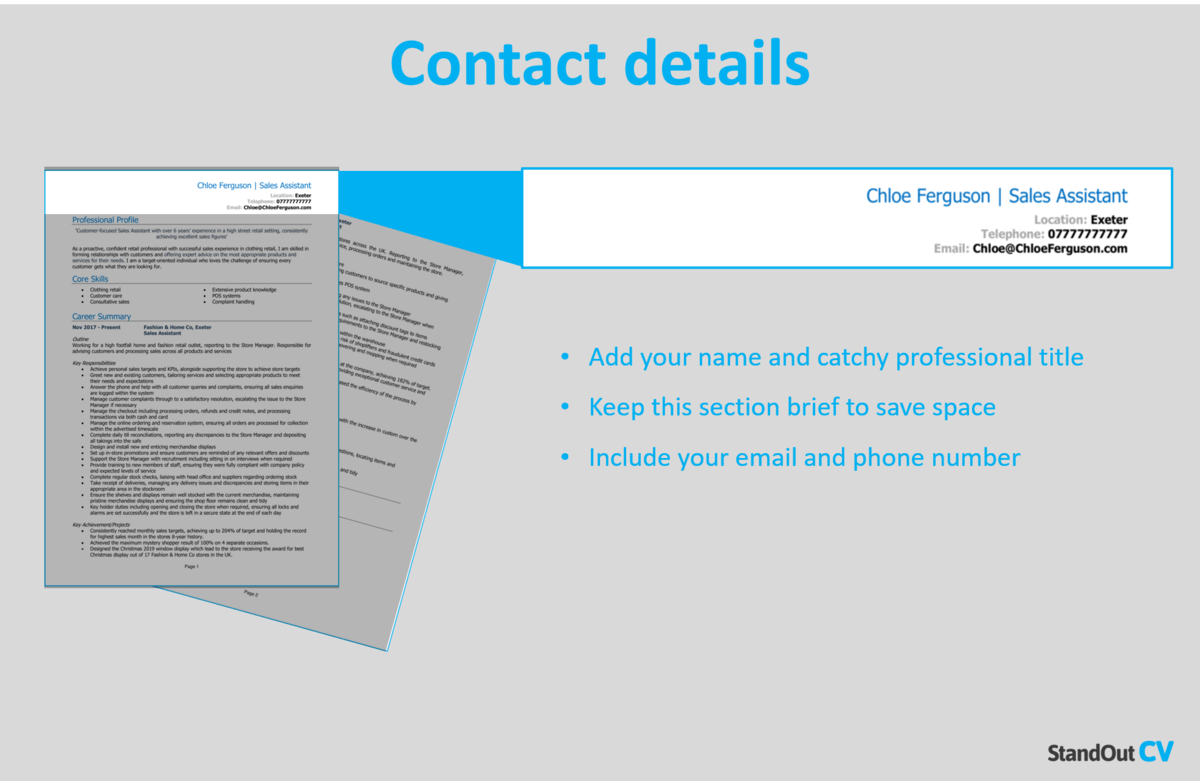
Keep your contact details short to save resume space and include the following.
You can add a link to your LinkedIn profile if you have one – you do not need to include personal details like date of birth or marital status.
Now it’s time to get into the real content of your resume, starting with the summary.
Your resume summary is a short paragraph at the top of the document, and its jobs is to catch the eye of hiring managers by summarizing all your skills and knowledge that are most important to the roles you are applying for.
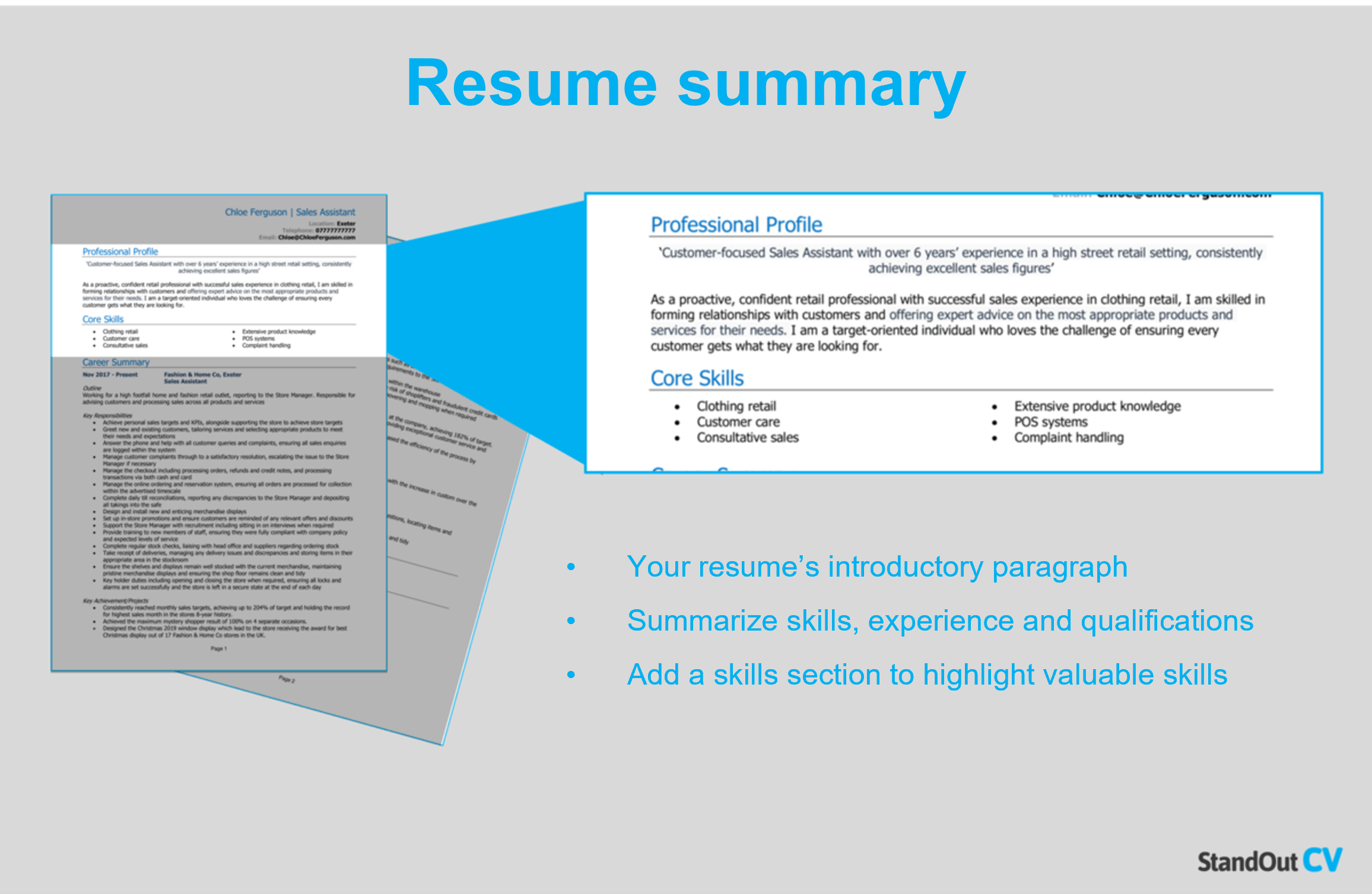
How to create a resume summary that will excite recruiters:
Specialist STEM graduate with professional experience as a Junior Engineer and a master’s degree in Renewable Energy looking to work in research and development of low carbon energy solutions. ACU-Certified AutoCAD Professional with demonstrated success in cost-effective end-to-end product development. Proficiency in data analysis and site audit.
Quick tip: Choose from hundreds of pre-written summaries across all industries, and add one to your resume with one-click in our quick-and-easy Resume Builder. All written by recruitment experts and easily tailored to suit your unique skillset and style.
Sitting just underneath your resume summary, your core skills section gives recruiters 4-10 of your most in-demand skills in just a glance.
As STEM jobs may get hundreds of applications, this is a great way to stand out and quickly grab hiring managers’ attention.
It should be made up of 2-3 columns of bullet points and highlight attributes that are hyper-relevant to the jobs you are aiming for.
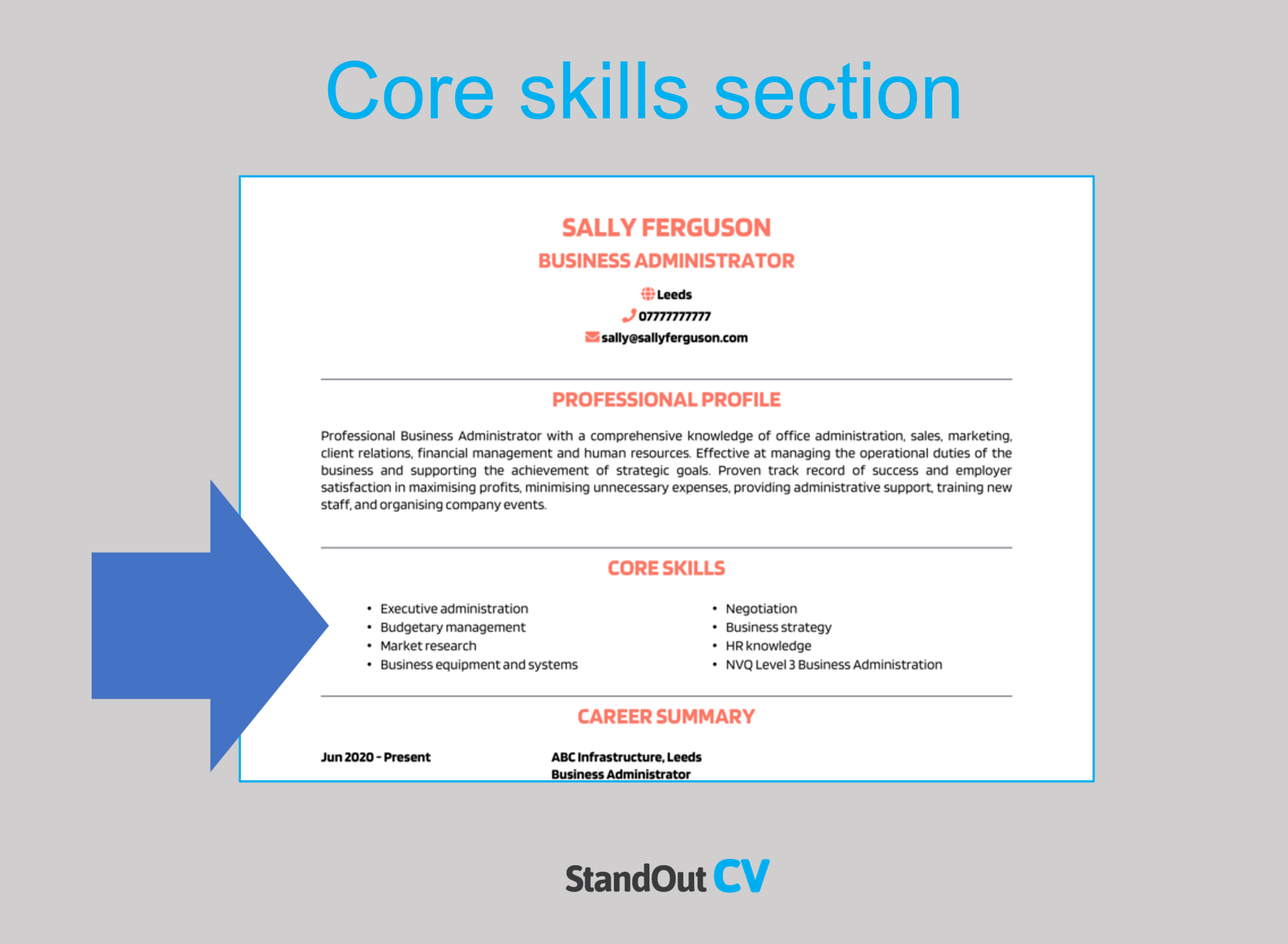
Technical expertise – Possessing in-depth knowledge and understanding of the latest scientific and technological advancements in a particular field, such as computer science or engineering.
Data analysis – Analyzing large and complex data sets to identify patterns, trends, and insights, and to develop predictive models.
Problem resolution – Identifying complex problems, breaking them down into manageable components, and developing and implementing effective solutions.
Programming – Utilizing proficiency in one or more programming languages, such as Python, Java, or C++, to develop software and applications.
Experimental design – Planning, designing, and executing experiments to test hypotheses, gather data, and analyze results.
Quality control – Ensuring that products, services, and processes meet or exceed quality standards, through rigorous testing and inspection.
Mathematical modeling – Developing mathematical models to simulate complex systems, evaluate performance, and optimize results.
Innovation – Generating new ideas, products, and technologies, and continuously improving existing ones.
Stakeholder communication – Clearly and effectively communicating complex technical information to non-technical stakeholders, such as managers or clients.
Quick tip: Our quick-and-easy Resume Builder contains thousands of in-demand skills for every profession that can be added to your resume in seconds – saving you time and greatly improving your chances of landing job interviews and getting hired.

Now that you’ve reeled recruiters in with your awesome summary, it’s time to delve into your work experience.
Here you’ll list your previous jobs (starting with your most recent and working backward) and showcase how you apply your skills in the workplace.
Provide lots of detail in recent jobs, and less in older roles.
If you have no relevant paid experience, you can include voluntary work and placements – but if you have lots of experience, you can leave out some of the really old jobs.
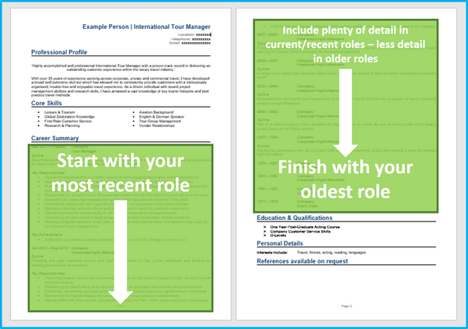
Your job description probably includes tons of information, so it’s vital to organize it well when writing about it on your resume.
Structure your jobs as like the example below to make skim-reading easy for recruiters and hiring managers.
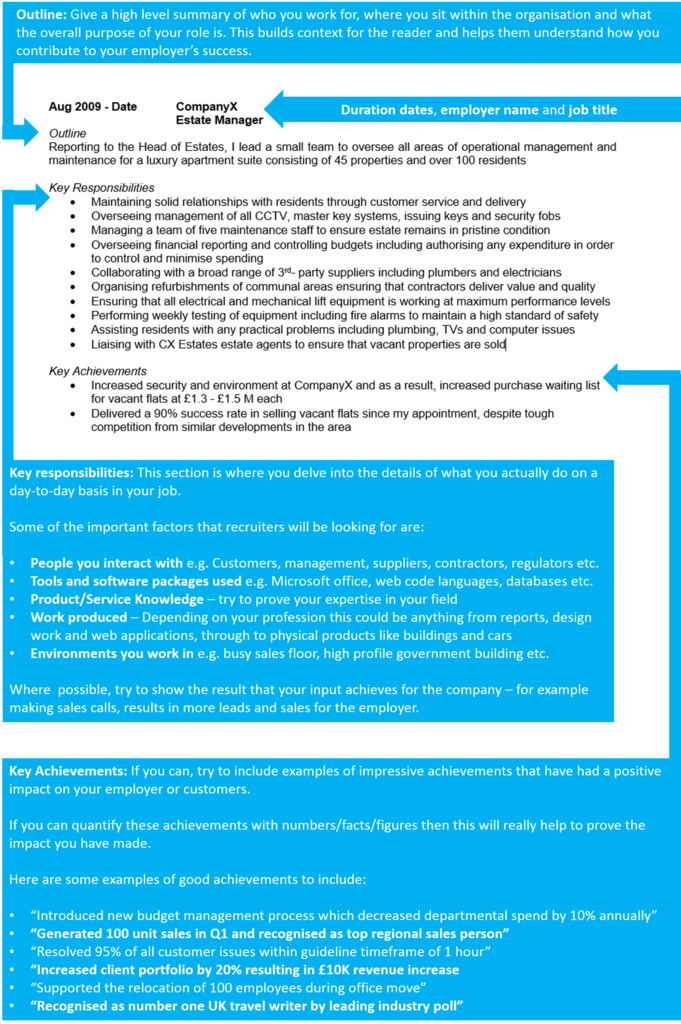
Job outline
Start with a 1-2 sentence outline of the role, summarizing what the goal of your position was, who you reported to (or managed) and the type of organization you worked for.
Key responsibilities
List your notable responsibilities in short sharp bullet points to demonstrate your input and how you contributed to the organization’s success.
Highlight the skills that are most important to the roles you are applying for.
Key achievements
Finish each role by highlighting some impressive achievements you made whilst in the role.
Anything that benefited the employer can be included from making financial savings, to winning new customers.
Quantify your achievements with facts and figures if you can, e.g. “reduced call wait time by 10%”
Outline
Completed the 12-month graduate programme at leading US energy provider, TFT, contributing to multiple projects in the commercial installation team.
Key Responsibilities
Quick tip: Create impressive job descriptions easily in our quick-and-easy Resume Builder by adding pre-written job phrases for every industry and career stage.
Nearing the end of your resume, your education/qualifications section should be added.
In a well-structured list, add all of your qualifications and certifications that qualify you to perform a typical STEM role.
If you have plenty of work experience, keep this section brief – if not, add lots of detail to make up for your lack of experience.
The additional info section is optional but can be useful if you have anything else to add that could benefit your application.
For example, you may have some hobbies and interests that are relevant to your job – or you might have awards or publications to shout about.

Crafting a strong STEM (Science, Technology, Engineering, Mathematics) resume can be a daunting task, but implementing the steps outlined above will significantly increase your chances of securing multiple interview opportunities.
Good luck with your job search!